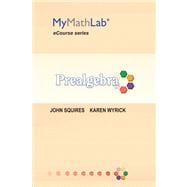
John Squires has been teaching math for over 20 years. He was the architect of the nationally acclaimed “Do the Math” program at Cleveland State Community College and is now head of the math department at Chattanooga State Community College, where he is implementing course redesign throughout the department. John is the 2010 Cross Scholar for the League for Innovation and the author of the 13th Cross Paper which focuses on course redesign. As a redesign scholar for The National Center for Academic Transformation (NCAT), John speaks frequently on course redesign and has worked with both colleges and high schools on using technology to improve student learning.
Karen Wyrick is the current chair of the math department at Cleveland State Community College and has been teaching math there for over 18 years. She is an outstanding instructor, as students have selected her as the college’s best instructor more than once, and she was recently awarded a 2011 AMATYC Teaching Excellence Award. Karen played an integral role in Cleveland State’s Bellwether Award-winning “Do the Math” redesign project, and she speaks frequently on course redesign at colleges throughout the nation and also serves as a redesign scholar for The National Center for Academic Transformation (NCAT).
MM1: Whole Numbers
1.1 Whole Numbers
1.2 Rounding
1.3 Adding Whole Numbers; Estimation
1.4 Subtracting Whole Numbers
1.5 Basic Problem Solving
1.6 Multiplying Whole Numbers
1.7 Dividing Whole Numbers
1.8 More with Multiplying and Dividing
1.9 Exponents
1.10 Order of Operations and Whole Numbers
1.11 More Problem Solving
MM2: Integers
2.1 Understanding Integers
2.2 Adding Integers
2.3 Subtracting Integers
2.4 Multiplying and Dividing Integers
2.5 Exponents and Integers
2.6 Order of Operation and Integers
MM3: Introduction to Algebra
3.1 Variables and Expressions
3.2 Like Terms
3.3 Distributing
3.4 Simplifying Expressions
3.5 Translating Words into Symbols
MM4: Equations
4.1 Equations and Solutions
4.2 Solving Equations by Adding or Subtracting
4.3 Solving Equations by Multiplying or Dividing
4.4 Solving Equations - Two Steps
4.5 Solving Equations - Multiple Steps
4.6 Translating Words into Equations
4.7 Applications of Equations
MM5: Factors and Fractions
5.1 Factors
5.2 Prime Factorization
5.3 Understanding Fractions
5.4 Simplifying Fractions - GCF and Factors Method
5.5 Simplifying Fractions - Prime Factors Method
5.6 Multiplying Fractions
5.7 Dividing Fractions
MM6: LCM and Fractions
6.1 Finding the LCM - List Method
6.2 Finding the LCM - GCF Method
6.3 Finding the LCM - Prime Factor Method
6.4 Writing Fractions with an LCD
6.5 Adding and Subtracting Like Fractions
6.6 Adding and Subtracting Unlike Fractions
MM7: Mixed Numbers
7.1 Changing a Mixed Number to an Improper Fraction
7.2 Changing an Improper Fraction to a Mixed Number
7.3 Multiplying Mixed Numbers
7.4 Dividing Mixed Numbers
7.5 Adding Mixed Numbers
7.6 Subtracting Mixed Numbers
7.7 Adding and Subtracting Mixed Numbers - Improper Fractions
MM8: Operations with Decimals
8.1 Decimal Notation
8.2 Comparing Decimals
8.3 Rounding Decimals
8.4 Adding and Subtracting Decimals
8.5 Multiplying Decimals
8.6 Dividing Decimals
MM9: More with Fractions and Decimals
9.1 Order of Operations and Fractions
9.2 Order of Operations and Decimals
9.3 Converting Fractions to Decimals
9.4 Converting Decimals to Fractions
9.5 Solving Equations Involving Fractions
9.6 Solving Equations Involving Decimals
MM10: Ratios, Rates, and Percents
10.1 Ratios
10.2 Rates
10.3 Proportions
10.4 Percent Notation
10.5 Percent and Decimal Conversions
10.6 Percent and Fraction Conversions
10.7 The Percent Equation
10.8 The Percent Proportion
10.9 Percent Applications
MM11: U.S. and Metric Measurement
11.1 U.S. Length
11.2 U.S. Weight and Capacity
11.3 Metric Length
11.4 Metric Mass and Capacity
11.5 Converting Between U.S. and Metric Units
11.6 Time and Temperature
MM12: Introduction to Geometry
12.1 Lines and Angles
12.2 Figures
12.3 Perimeter - Definitions and Units
12.4 Finding Perimeter
12.5 Area - Definitions and Units
12.6 Finding Area
12.7 Understanding Circles
12.8 Finding Circumference
12.9 Finding Area - Circles
MM13: More Geometry
13.1 Volume - Definitions and units
13.2 Finding Volume
13.3 Square Roots
13.4 The Pythagorean Theorem
13.5 Similar Figures
13.6 Finding Missing Lengths
13.7 Congruent Triangles
13.8 Applications of Equations and Geometric Figures
MM14: Statistics
14.1 Bar Graphs
14.2 Line Graphs
14.3 Circle Graphs
14.4 Mean
14.5 Median
14.6 Mode
14.7 Introduction to Probability
MM15: Introduction to Graphing
15.1 The Rectangular Coordinate System
15.2 Graphing Linear Equations by Plotting Points
15.3 Graphing Horizontal and Vertical Lines
15.4 Slope and Rate of Change
MM16: Polynomials
16.1 Introduction to Polynomials
16.2 Adding Polynomials
16.3 Subtracting Polynomials
16.4 Multiplying Polynomials
16.5 Factoring Polynomials
16.6 Scientific Notation
Appendix A: Additional Topics
A.1 Graphing Inequalities in One Variable
A.2 Graphing Linear Equations Using Intercepts
Appendix B: Consumer Finance Applications
B.1 Balancing a Checking Account
B.2 Determining the Best Deal when Purchasing a VehicleThe New copy of this book will include any supplemental materials advertised. Please check the title of the book to determine if it should include any access cards, study guides, lab manuals, CDs, etc.
The Used, Rental and eBook copies of this book are not guaranteed to include any supplemental materials. Typically, only the book itself is included. This is true even if the title states it includes any access cards, study guides, lab manuals, CDs, etc.